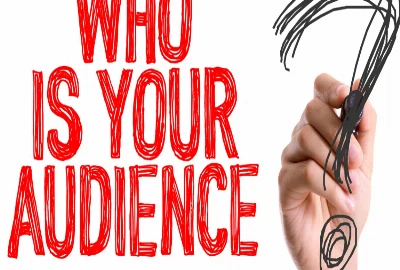From Fan to Stan to Burnout: The Life Cycle of Digital Fandom

The digital age has reshaped the way people connect with entertainment, celebrities, and even each other. Where fandom once meant mailing letters to a fan club or queuing for hours outside concert venues, today it thrives in online spaces—Twitter threads, TikTok edits, Discord servers, and Reddit forums. At first glance, this might look like harmless enthusiasm, a digital extension of human connection. But the speed, scale, and intensity of online fandom have created a cycle that often goes from casual admiration to obsessive devotion—and finally, to emotional and social exhaustion.
This is what we call the digital fandom life cycle: a path that takes individuals from being a casual fan, to an invested stan (a hyper-devoted supporter), and ultimately to burnout—a state where the very thing that once brought joy starts to feel like pressure, toxicity, or a burden.
Understanding this cycle isn’t just about pop culture. It reveals deeper truths about internet identity, online performance, and how algorithms feed our obsessions. In a world where everything is content and everyone is curating their identity through what they consume, fandom becomes less of a hobby and more of a lifestyle—or even a form of labor.
In this post, we’ll explore each stage of the digital fandom life cycle, why people get stuck in it, and what it takes to break free. Whether you’ve ever called yourself part of an “army,” “directioner,” or “swiftie,” or simply wondered why fandom culture feels so intense today, this breakdown will shed light on the highs, lows, and hidden costs of devotion in the digital age.
Stage One: Casual Fan – Curiosity and Connection
The life cycle begins with simple curiosity. A new TV show trending on Netflix, a viral TikTok audio from an emerging artist, or a captivating performance on an award show sparks interest. At this point, you’re a casual fan—engaging at surface level. You might listen to a few songs, binge the first season of a series, or follow an actor’s Instagram account without feeling consumed by it.
In this stage, fandom is about curiosity and connection. Digital spaces make it easy to discover and engage with content in bite-sized ways. Algorithms push recommendations, hashtags connect you with others who share the same interest, and fan-made content fills your feed without you even searching for it. Unlike traditional fandom, which required effort to seek out communities, today’s platforms actively deliver fandom to you.
Being a casual fan is often the most balanced and enjoyable stage. You dip in and out when you want, explore conversations without feeling obligated, and maintain a healthy sense of distance. You enjoy the art, performances, or creativity, but you don’t yet feel the weight of responsibility to defend or constantly engage.
However, the design of social media platforms makes it easy for casual fans to slip further in. The more you interact, the more content the algorithm serves. Before long, you’re not just passively consuming but actively participating—liking, commenting, reposting, and diving into discussions. This engagement starts to feel less like entertainment and more like community, setting the stage for transformation into a stan.

Stage Two: Stan – Identity, Obsession, and Ownership
The second stage is where fandom becomes identity. To stan is not simply to like something, but to live it, breathe it, and defend it. Borrowed from the Eminem song “Stan” (about an obsessive fan), the term has been reclaimed online to describe hyper-dedicated communities that treat their chosen celebrity, band, or franchise as more than just entertainment—it becomes a central part of who they are.
At this stage, fandom is no longer casual. It demands time, energy, and emotional investment. Stans often spend hours creating edits, running fan accounts, trending hashtags, and defending their favorites against criticism. This isn’t just about personal enjoyment anymore—it’s about community validation and online recognition. Being a stan means you’re part of something bigger, a global family bound by shared obsession.
Digital platforms encourage this shift. Twitter and TikTok reward those who post the most content, start conversations, or go viral with edits and memes. Fan communities often create hierarchies, where those who contribute the most gain influence and recognition. For many, this sense of belonging feels intoxicating. Fandom provides structure, purpose, and even status in an online world that often feels chaotic.
But there’s a cost. The deeper into stan culture you go, the more personal responsibility you feel. Criticism of your favorite artist can feel like a personal attack. Successes and failures of celebrities become tied to your own identity. And because stan culture is highly competitive, members often feel pressure to constantly defend, promote, and contribute—turning what started as fun into unpaid labor.
The irony is that in seeking connection, stans often find themselves in toxic dynamics: fan wars, call-out culture, and endless comparisons. What once felt like love begins to feel like work. And eventually, this intensity leads many to the next stage: burnout.

Stage Three: Burnout – Exhaustion, Disillusionment, and Exit
Burnout is the inevitable crash at the end of the digital fandom life cycle. It happens when the joy of being a fan turns into fatigue, resentment, or even anger. After months or years of devotion, people realize they’ve poured too much time, energy, and identity into something that no longer feels rewarding.
For many, burnout begins with small cracks—feeling drained after defending an artist online, noticing toxicity within the community, or realizing the constant content cycle leaves no room for rest. What once felt like fun suddenly feels overwhelming. Instead of excitement, new album drops or show announcements bring anxiety about keeping up.
This stage is marked by disillusionment. Fans start to notice the flaws in their idols or the exploitative nature of industries that thrive on endless promotion. They see how companies profit from their unpaid labor—streaming parties, fan campaigns, and endless engagement that boosts visibility but rarely benefits the fans themselves. Some experience “parasocial breakups,” realizing that their idol doesn’t know them, care about them, or live up to the fantasy.
Burnout also comes from community dynamics. What once felt like belonging can turn toxic when fans police each other, gatekeep, or attack outsiders. The intensity of stan wars, constant drama, and online performance leaves little room for genuine joy. For many, the only way to cope is to step back or leave entirely.
Yet, burnout doesn’t erase the memories or connections made. Some fans transition back to being casual supporters, enjoying the art without the pressure. Others leave fandom altogether, carrying lessons about boundaries and balance into other parts of their digital lives. Either way, burnout is a reminder that even passion has limits—and that self-preservation sometimes means walking away.

Breaking the Cycle: How to Enjoy Fandom Without Burning Out
If fandom is so prone to this cycle, how do we break free? The answer lies in setting boundaries, redefining what fandom means, and resisting the pressure to turn passion into performance. Here are a few ways to enjoy fandom without falling into the burnout trap:
Consume at your own pace – Remember, you don’t need to keep up with every release, update, or hashtag trend. Enjoy content on your terms.
Don’t tie identity to fandom – It’s fine to celebrate what you love, but avoid making it your sole defining trait. You are more than your fandom.
Set digital boundaries – Limit screen time, mute toxic accounts, and curate your feeds so they add joy, not stress.
Prioritize real-world balance – Offline hobbies, friendships, and interests can prevent fandom from becoming all-consuming.
Accept imperfection – Celebrities are human, industries are profit-driven, and communities are flawed. Detaching from perfectionism can protect your mental health.
By embracing fandom as a hobby rather than a lifestyle, you can reclaim the joy of being a fan without the exhaustion of being a stan.




